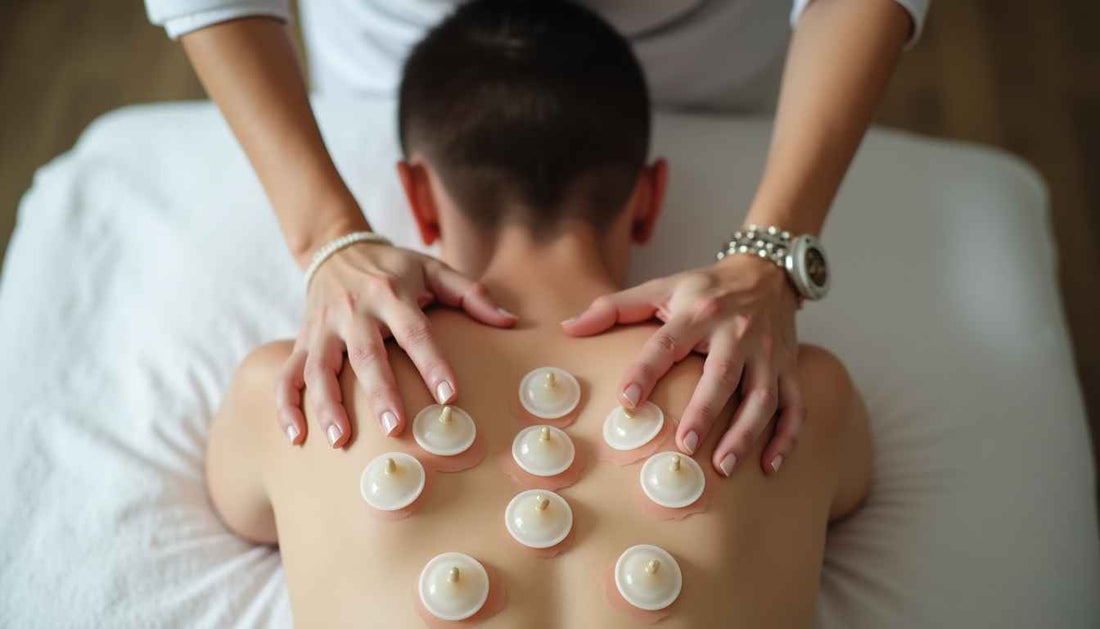
7 Proven Cupping Therapy Techniques You Should Know
Share
Cupping therapy isn’t just one method—it’s a diverse healing practice with several techniques designed for specific goals like pain relief, detox, and energy flow. Whether you’re seeking muscle recovery, stress relief, or improved circulation, learning about the different cupping therapy techniques can help you choose the method that best suits your body’s needs. In this guide, we’ll break down the top techniques used by professionals around the world—and what you can expect from each.
What Are Cupping Therapy Techniques?
Cupping therapy techniques refer to the different ways suction is applied to the skin and how the treatment is performed. Each technique varies in purpose, intensity, and the conditions it's used to treat. Understanding the differences helps patients and practitioners maximize therapeutic outcomes.
1. Dry Cupping (Static Cupping)
What It Is:
Dry cupping is the most common and traditional technique. Cups are applied to the skin using suction and left in place for 5–15 minutes.
Best For:
- Muscle pain
- Tension
- General wellness and circulation
How It Works:
The suction draws blood to the skin’s surface, promoting local healing and reducing inflammation.
🡒 Learn more: Cupping Therapy Explained
2. Wet Cupping (Hijama)
What It Is:
Wet cupping involves pricking the skin with a sterile blade before applying suction, allowing a small amount of blood to be drawn.
Best For:
- Detoxification
- Chronic pain
- Inflammatory conditions
Why It’s Used:
It’s believed to remove "stagnant" or "toxic" blood from the body. Often performed in Middle Eastern and traditional Islamic medicine practices.
Important Note:
This technique must only be performed by trained practitioners due to the risk of infection.
🡒 Full breakdown: Wet Cupping Therapy
3. Sliding Cupping (Moving Cupping)
What It Is:
This involves applying oil to the skin and gliding the cup across the surface using gentle suction.
Best For:
- Large muscle groups (e.g., back, thighs)
- Muscle knots
- Fascia release and mobility
Benefits:
- Loosens muscle adhesions
- Promotes lymphatic drainage
- Provides a massage-like effect
4. Fire Cupping (Traditional Chinese Medicine)
What It Is:
A flame is briefly introduced into the cup to create suction before placing it on the skin.
Best For:
- Deep muscle relaxation
- Clearing “cold” or “damp” conditions in Traditional Chinese Medicine
Risks & Precautions:
Only skilled practitioners should perform this due to the risk of burns. Fire cupping is one of the oldest cupping therapy techniques.
5. Flash Cupping (Quick Cupping)
What It Is:
Cups are rapidly applied and removed in succession across a treatment area.
Best For:
- Stimulating blood flow
- Warming tissues
- Preparing muscles before athletic performance
Common In:
Sports recovery routines and pre-exercise treatments.
🡒 Related read: Cupping Therapy for Muscle Recovery
6. Needle Cupping (Acupuncture Cupping)
What It Is:
This hybrid technique combines acupuncture and cupping. Needles are inserted first, and cups are placed over them.
Best For:
- Chronic pain
- Sciatica
- Deep tissue tension
Used By:
Licensed acupuncturists and Traditional Chinese Medicine practitioners.
7. Herbal or Aromatherapy Cupping
What It Is:
Cups are applied after the skin is treated with medicinal herbs or essential oils to boost specific therapeutic effects.
Best For:
- Respiratory conditions
- Immune support
- Skin health
How It Helps:
Combines suction benefits with aromatherapeutic or herbal benefits for enhanced healing.
Featured Snippet Optimization
What are the main cupping therapy techniques?
The most common cupping therapy techniques include dry cupping, wet cupping, sliding cupping, fire cupping, flash cupping, needle cupping, and herbal cupping. Each is used for different health goals such as pain relief, detoxification, or improved circulation.
How to Choose the Right Cupping Technique
When selecting a cupping therapy technique, consider:
| Factor | Recommended Technique |
|---|---|
| Muscle recovery | Dry or Sliding Cupping |
| Detoxification | Wet Cupping |
| Chronic tension | Fire or Needle Cupping |
| Skin conditions | Herbal Cupping |
| Athletic warm-up | Flash Cupping |
Tip: Always consult with a certified therapist to determine the best approach based on your condition.
Aftercare Tips for All Techniques
Regardless of technique, follow these steps after a cupping session:
- Hydrate well to support detoxification
- Avoid hot showers for 4–6 hours
- Rest and avoid strenuous activity for 24 hours
- Moisturize the treated area if irritation occurs
🡒 For specific aftercare based on suction points: Cupping Pressure Points
FAQs (People Also Ask)
What is the most effective cupping technique?
It depends on your health goals. Dry cupping is widely used for general relief, while wet cupping is preferred for detoxification.
Is sliding cupping better than dry cupping?
Sliding cupping covers a wider area and is excellent for muscle tension, but dry cupping provides deeper, targeted suction.
Can I mix cupping techniques in one session?
Yes. Many therapists combine techniques like dry and sliding cupping for more comprehensive treatment.
How often should you get cupping therapy?
1–2 sessions per week is common, depending on the condition and recovery goals.
Conclusion
Cupping therapy is far more than a single treatment. With a variety of techniques, from fire cupping to sliding cupping, it offers a customizable approach to healing. Whether you want pain relief, muscle recovery, or detox, there’s a method to match. The key lies in understanding these options—and working with a trained practitioner to find your ideal fit.
CTA: Download Our Free Cupping Technique Guide
Want to know which cupping method is right for you? Download our FREE Cupping Therapy Techniques Guide with visual charts, comparisons, and aftercare checklists. Perfect for both practitioners and curious beginners.
Related Links:
- Cupping Therapy Explained
- Cupping Therapy for Muscle Recovery
- Cupping Pressure Points
- Wet Cupping Therapy
